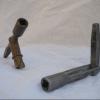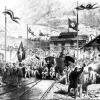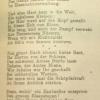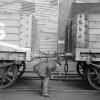The European Union - trying to create a new 'Europe of railways'
Europe of the Railways
Even today, accidents happen as a result of safety problems that are not limited to the national domain. In 2006, twenty-one passengers and two maintenance workers died when a German magnetic Transrapid train collided with maintenance work in the Netherlands due to poor communication.
In the past, international non-governmental organizations worked on railway development and passenger safety. Currently, the European Union deals with questions of railway safety, having recognized the seriousness of railway accidents. In 2004, the European Union stepped in to railway matters more directly by establishing an agency that deals with the development of railway safety.
The European Railway Agency seeks to develop a framework for evaluating and controlling the national safety authorities and national investigation bodies that generally examine railway accidents. In collaboration with national authorities and European railway administrations, the agency works to improve the quality of evaluation on accidents, as well as general safety indicators. Certain problems are still difficult to address, such as those caused by unauthorized persons and persons on level crossings.
Governing European railways remains a matter for multiple organizations and involves problems that have existed since the days of the first railways in Europe.
 Previous Story
Previous Story
How to cite this page
Suzanne Lommers, 'The European Union - trying to create a new 'Europe of railways'', Inventing Europe, http://www.inventingeurope.eu/story/the-european-union-trying-to-create-a-new-europe-of-railways
Sources
- Kaiser, Wolfram, Johan Schot, and Dagmara Jajesniak-Quast. Making Rules for Europe:
Experts, International Organizations, Cartels. Basingstoke: Palgrave, forthcoming. - Railway Safety Performance in the European Union 2011. European Railway Agency, June 7, 2011. http://www.era.europa.eu/Document-Register/Documents/Safety-Performance-Report-2011.pdf
- Schot, Johan, and Frank Schipper. “Experts and European Transport Integration, 1945-1958.” Journal of European Public Policy 18, no. 2 (March 1, 2011): 274–293.



















